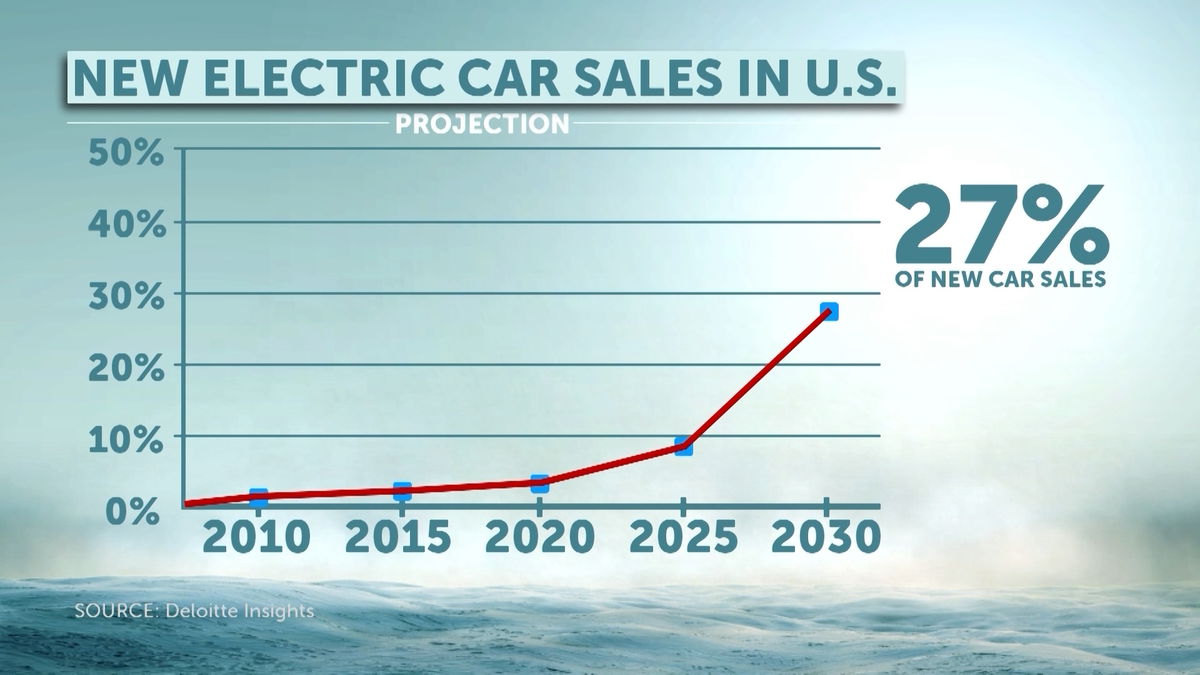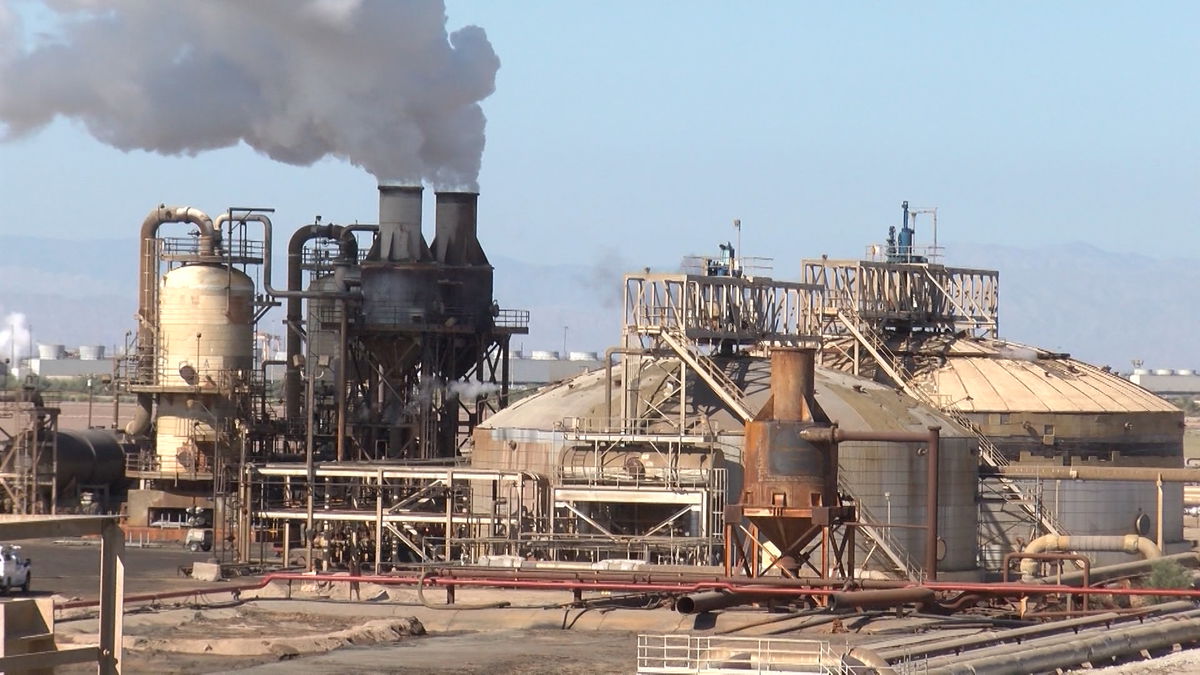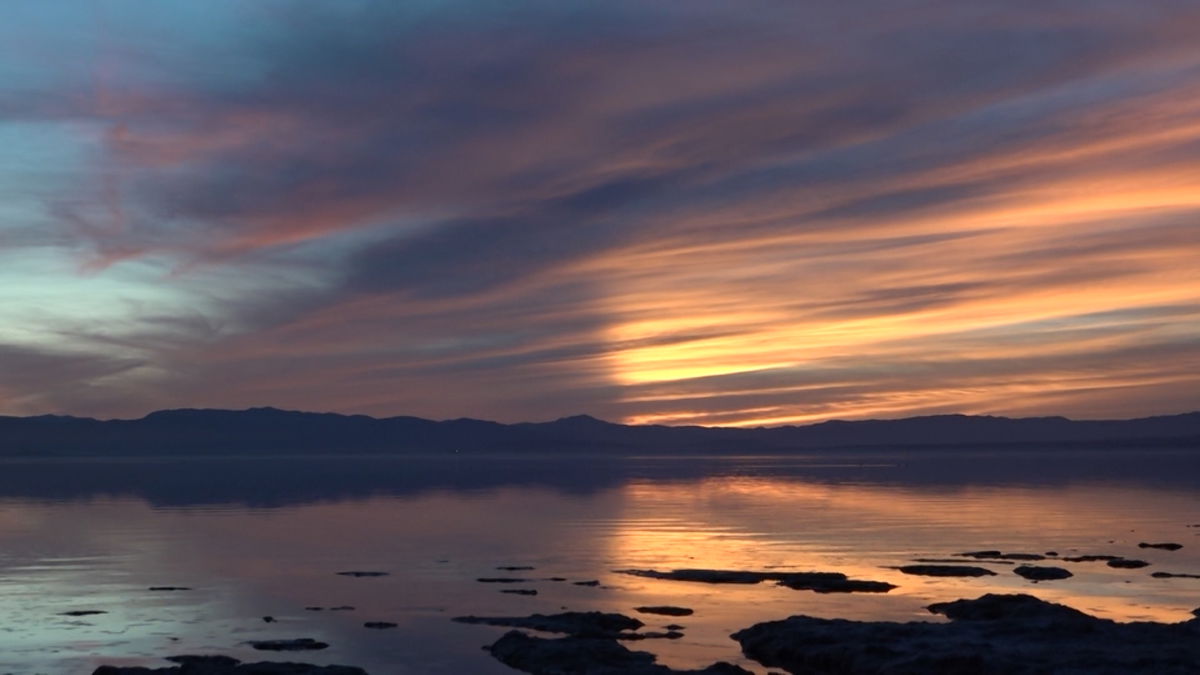Troubled Waters: The ‘White Gold Rush’ at Salton Sea is slow going but holds major lithium pay dirt
The "white gold rush" at the Salton Sea is on as the world market for lithium increases each year. Lithium is called "white gold" for its silvery color, and the Salton Sea is an untapped treasure chest of lithium for all the underground brine flowing through our rocks generated by the 11 geothermal plants situated around the lake.
"The geothermal brine at the Salton Sea is unique in the world," said Jonathan Weisgall, Vice President for Legislative and Regulatory Affairs for Berkshire Hathaway Energy.
The world is using lithium-ion batteries at breakneck demand. From cell phones to laptops to electric vehicles, our lives are increasingly dominated by electronics that require lithium ion batteries. With President Biden's nationwide goal of 50 percent electric vehicle sales by 2030, Tesla delivering a record number of cars in 2020, and a majority of automakers -- from Jaguar to GM to Hyundai -- going all-electric by 2035 or sooner, you can bet that we are going to need a whole lot of lithium to drive this green age forward.

"My hope is that we're able to extract that lithium. We could ensure that we have the lithium that's necessary for our batteries when we are using electrical vehicles, which is going to reduce greenhouse gas emission," said Riverside County Supervisor Manuel Perez, who is also the president of the Salton Sea Authority.
And that means finding a lithium source other than Australia or South America, which uses environmentally destructive or harmful methods, like blowing up rocks or evaporation ponds, to get to the juice.
The Salton Sea alone has the estimated potential to provide 40 percent of the lithium used by the world. But nothing here is set in stone yet; companies are still a ways off from seeing actual mass lithium production.
"If this is a baseball game, we're still in the first inning, but we're pretty confident we're gonna win this game," said Weisgall.
The three players around the Salton Sea are CalEnergy, which is owned by Berkshire Hathway, Energy Source, and Controlled Thermal Resources (CTR).
"Salton Sea was the most proven developed field that we could find pretty much on the planet."
Jonathan Weisgall, vP for Legislative and Regulatory Affairs for Berkshire Hathaway Energy
CTR is an Australian company currently building an entirely new geothermal and lithium plant near the Salton Sea from the ground up. The company struck a coveted deal with GM to supply its future electric car batteries from lithium at the Salton Sea.
"GM, I think, cleverly looked at the supply chain. Just by doing an agreement here, they removed 30 leads to the supply chain. They don't have to source out of other countries in China and give crude process," said Rod Colwell, CEO of CTR.
The earliest we could see lithium production would be by CTR in early 2024.
Energy Source, which owns one of the 11 geothermal plants around the Salton Sea, also plans to produce lithium by April of 2024.
Berkshire Hathaway, which owns the other 10 geothermal plants under the subsidiary Cal Energy, is the biggest player here. It plans to produce lithium on a mass scale by 2027.

News Channel 3 was the first news crew to shoot inside Cal Energy's plants. If Cal Energy is successful in extracting lithium on a commercial level, it will become one of the largest suppliers of lithium to not just the nation, but the entire world.
Cal Energy said when they're up and running, they alone will be able to provide 30 percent of the world's lithium.
"What would the amount of lithium be? We're predicting about 90,000 metric tons a year. That's in a world market of 300,000 today. So Berkshire Hathaway would be not only number one in the United States but really quite competitive with companies that are producing lithium in western Australia and in South America," Weisgall said.
A current look at the world's lithium production reveals that the U.S. is not a player at all in the world's lithium production market right now, according to ABC News.

But how these Salton Sea companies will extract lithium is an entirely new process, an untried method that has never been done on a commercial level before.
To understand how these companies will be doing this, it's important to understand how geothermal energy works. The Salton Sea is prized for where it sits -- on land with one of the highest levels of geothermal activity in the world. The earth's magma superheats water underground. These geothermal plants drill down deep into the earth, pump up the brine, and use the steam to generate power for our homes and businesses before depositing the hot fluid back into the ground. But now, these companies will add technology that will filter out the lithium in the brine before returning it back to the earth.
And here is where geothermal experts want to clear up a misconception: The lithium does not come from the saltiness of the Salton Sea. The lithium comes from the superheated fluid deep below, making extraction possible because of the geothermal process.
And with all this excitement for what's now been dubbed "Lithium Valley," what does this mean for the Salton Sea area?
All geothermal companies have said there are no plans to donate money to any sort of lake fund but that success with lithium means building the Salton Sea area up.
"If we go commercial, we will be looking at hiring a large workforce, we want to hire locally as much as possible. That means quite frankly, better education," Weisgall said. "If this is wildly successful and you get more supply chain development, such as battery manufacturers, or anode-cathode manufacturers, that would lead to even more jobs, which in turn, leads to more housing that leads to more restaurants and the like."
And that is the point, isn't it? Revitalization of the Salton Sea also means revitalization of the people.

Of the proposed $220 million dollars for the Salton Sea, the California Assembly has recently approved $40 million.
The rest of that money will have to be sought after next year.
Troubled Waters: The Salton Sea Project is a special four-part series in which News Channel 3 morning anchor Angela Chen takes a look at the history, ongoing issues, and the fight for the future of the Salton Sea.
Click here to visit our Salton Sea Project section to learn more about the special report
- Part 1: Paradise Lost - Angela looks back at the history of the Salton Sea. Find out it's connection to Spanish explorers, and how it went from one of the most popular destination to abandoned and on the verge of disaster
- Part 2: Toxic Exposure - Angela goes in-depth on the history of toxic outbreaks at the Salton Sea and its connection to the current health issues of those who live near the lak
- Part 3: A Lake Languished - Angela looks at the millions spent over the years to save the Salton Sea and why there is so little progress to show for it
- Part 4: Salton Sea Plea - There are massive environmental problems at the Salton Sea, but after decades of neglect, could the lake's unique location be part of the solution in saving it? Angela highlights the movement happening to save the lake




